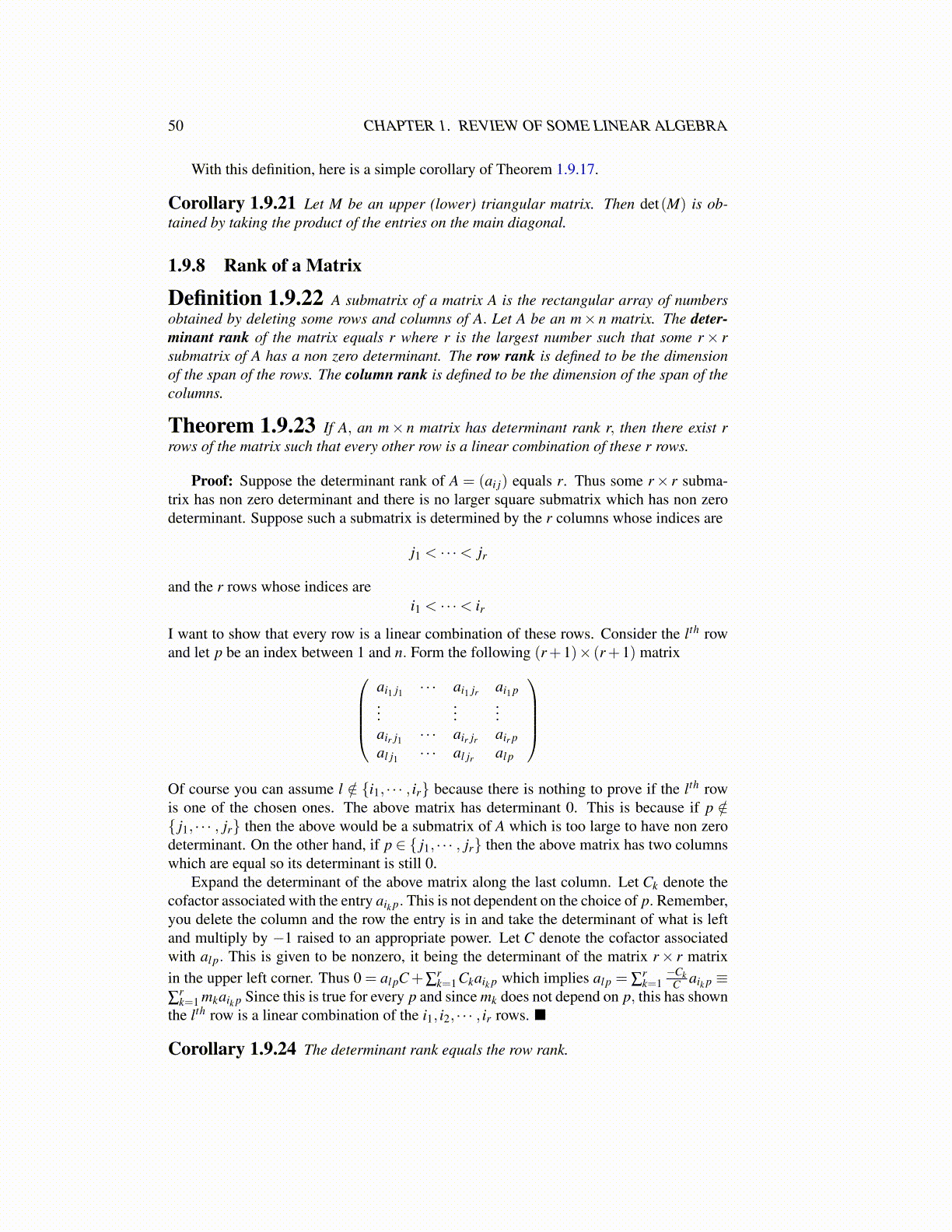
50 CHAPTER 1. REVIEW OF SOME LINEAR ALGEBRA
With this definition, here is a simple corollary of Theorem 1.9.17.
Corollary 1.9.21 Let M be an upper (lower) triangular matrix. Then det(M) is ob-tained by taking the product of the entries on the main diagonal.
1.9.8 Rank of a Matrix
Definition 1.9.22 A submatrix of a matrix A is the rectangular array of numbersobtained by deleting some rows and columns of A. Let A be an m× n matrix. The deter-minant rank of the matrix equals r where r is the largest number such that some r× rsubmatrix of A has a non zero determinant. The row rank is defined to be the dimensionof the span of the rows. The column rank is defined to be the dimension of the span of thecolumns.
Theorem 1.9.23 If A, an m× n matrix has determinant rank r, then there exist rrows of the matrix such that every other row is a linear combination of these r rows.
Proof: Suppose the determinant rank of A = (ai j) equals r. Thus some r× r subma-trix has non zero determinant and there is no larger square submatrix which has non zerodeterminant. Suppose such a submatrix is determined by the r columns whose indices are
j1 < · · ·< jr
and the r rows whose indices arei1 < · · ·< ir
I want to show that every row is a linear combination of these rows. Consider the lth rowand let p be an index between 1 and n. Form the following (r+1)× (r+1) matrix
ai1 j1 · · · ai1 jr ai1 p...
......
air j1 · · · air jr air pal j1 · · · al jr al p
Of course you can assume l /∈ {i1, · · · , ir} because there is nothing to prove if the lth rowis one of the chosen ones. The above matrix has determinant 0. This is because if p /∈{ j1, · · · , jr} then the above would be a submatrix of A which is too large to have non zerodeterminant. On the other hand, if p ∈ { j1, · · · , jr} then the above matrix has two columnswhich are equal so its determinant is still 0.
Expand the determinant of the above matrix along the last column. Let Ck denote thecofactor associated with the entry aik p. This is not dependent on the choice of p. Remember,you delete the column and the row the entry is in and take the determinant of what is leftand multiply by −1 raised to an appropriate power. Let C denote the cofactor associatedwith al p. This is given to be nonzero, it being the determinant of the matrix r× r matrixin the upper left corner. Thus 0 = al pC+∑
rk=1 Ckaik p which implies al p = ∑
rk=1
−CkC aik p ≡
∑rk=1 mkaik p Since this is true for every p and since mk does not depend on p, this has shown
the lth row is a linear combination of the i1, i2, · · · , ir rows. ■
Corollary 1.9.24 The determinant rank equals the row rank.